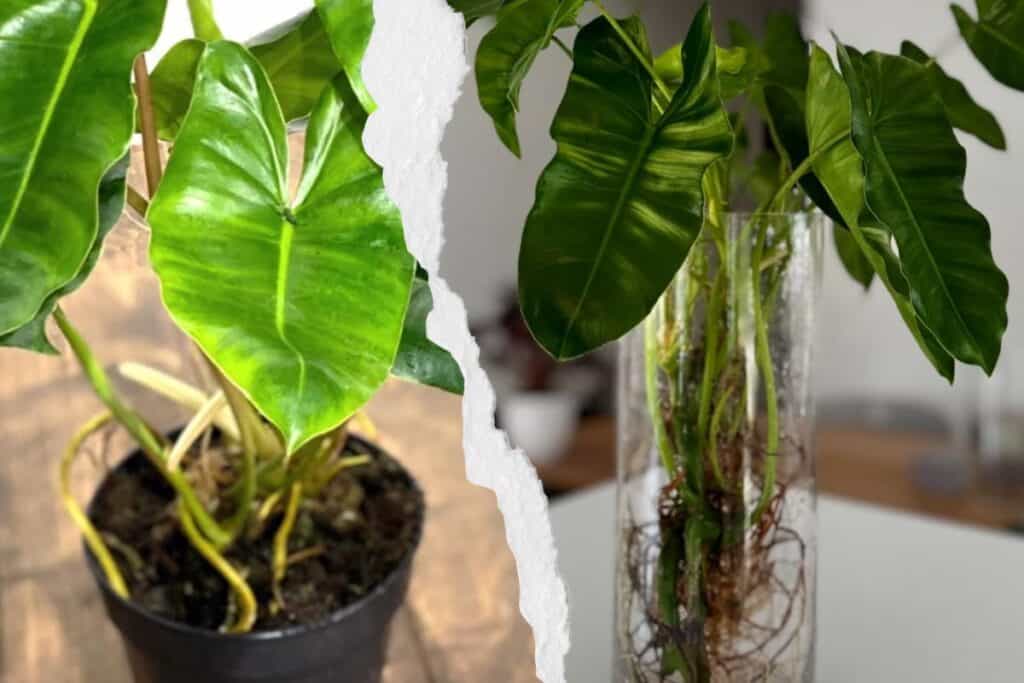Wondering whether your houseplants grow better in soil or in water? Both ways work—but they have different pros and cons. Let’s break it down so you can pick what works best for your space, your time, and your plants!

Contents
🧱 What’s the Difference?
- Soil Growing: Uses natural dirt that’s full of minerals, nutrients, and good microbes. Plants grow through their roots like they would outside.
- Hydroponics: No soil needed! Plants grow in things like clay balls or rockwool, and get nutrients from water mixed with plant food. You control everything—how much food they get, the pH level, and even how often they “eat.”
👉 Both methods help plants grow—but they work in totally different ways. Soil is more hands-off and mimics outdoor conditions. Hydroponics is more exact and high-tech, giving faster results but needing more effort. Picking the best one depends on how involved you want to be and what kinds of plants you’re growing.
✅ Pros & Cons
| Method | Pros | Cons |
|---|---|---|
| Soil | Easy setup, less upkeep, natural nutrients & microbe support | Slower growth, possible pests, hard to control nutrients |
| Hydroponics | Fast growth (20–30% faster), saves water (up to 90%), clean | Needs equipment, lots of monitoring, more setup time |
🛠 What You’ll Need
🪴 Soil Setup:
- Pots with drainage holes
- Good potting mix
- Water tray
- Moisture meter
- Fertilizer
💧 Hydroponic Setup:
- Water reservoir
- Air pump
- pH test kit
- Clay pellets or rockwool
- Nutrient solution
- Thermometer (keep water 65–75°F)
- Optional grow light for indoor plants
🌱 Feeding & Watering Tips

- Soil: Fertilize every 4–6 weeks. You can test pH, but it’s not very exact.
- Hydroponics: Change nutrient water weekly. Test pH daily (keep it 5.5–6.5) and nutrient levels between 500–1500 PPM.
- Hydro systems use way less water—but need daily care.
🚀 Growth Speed & Results
- Hydroponic plants grow 30–50% faster than soil-grown ones.
- Leaves on pothos or philodendron can pop up in 5–7 days in hydroponics, versus 10–14 in soil.
- Roots form in 2–3 weeks with water setups, compared to 4–6 weeks in soil.
- Hydroponics can lead to thicker, bushier plants with more leaves.
⚠️ Common Problems (and Fixes)
- Soil Issues: Watch out for pests and overwatering. Let soil dry before watering again. Add sand or diatomaceous earth to stop gnats.
- Hydro Issues: You need clean equipment and stable power. Check all parts weekly and clean monthly to stop algae. Keep spare parts nearby.
🪴 Best Plants to Grow
Great in Soil:
- Peace lily
- Spider plant
- Snake plant
Great in Hydroponics:
- Basil, mint
- Pothos, philodendron
- Lucky bamboo
🌟 Beginner Tip: Start with pothos. It grows in both methods and is hard to kill. Hydroponics will give it a boost, but soil still works great.
